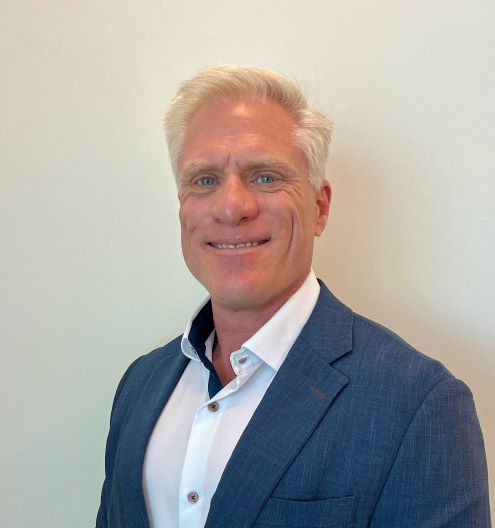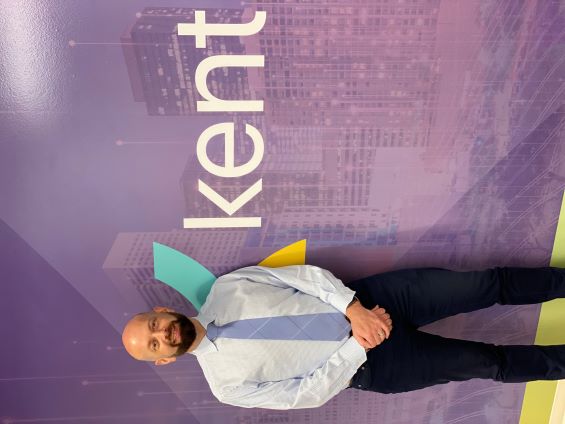
The road to net zero emissions is a long one, but Kent’s VP of engineering and consulting, Tom Ayers, believes a “basket of energies” is needed to reach emissions goals. (Source: Kent)
Energy transition! Net zero! Decarbonize! These are the lofty rallying cries of activists and governments alike. But global emissions goals can’t be reached on hope alone.
Different forms of energy must be put to use in partnership with hydrocarbons, Tom Ayers, Kent Plc’s vice president of engineering and consulting, told Hart Energy. “I am a firm believer in a basket of energies and basket of solutions. You can’t rely on one thing, you have to have a basket.”

In Ayers’ so-called energy basket, he includes the whole gamut of energy, from fossil fuels to solar power to hydropower. And while Ayers and his Kent colleagues do understand the need for energy sources that emit less carbon, they also recognize that it might be a ways before a 100% shift in energy sources happen.
“It’s impossible to just to turn off hydrocarbons, the world needs the energy,” Ron Duguid, field development and energy transition manager for Kent, told Hart.
At the heart of the energy transition problem are hydrocarbons. Completely doing away with them would not only put global energy security at risk, it would cause issues in other industries as well.
“Everything that you touch has some sort of hydrocarbon attached to it. So medications, makeup, plastic, everything has some component of hydrocarbon in it,” Ayers said. “If your clothes have anything other than cotton or a less common natural fiber in it, it’s likely a synthetic material derived from a hydrocarbon.”
It will take a lot of innovation to be able to move away from a world that relies so heavily on hydrocarbons, Ayers said.
Thankfully, companies like Kent have begun to step up to the plate, especially when it comes to decarbonization.
During decarbonization talks, Duguid said three mature technologies are brought up: absorption, adsorption and membrane separation—each requiring careful selection for specific projects.
Absorption using liquid solvents is adaptable and scalable for various projects, but its energy-intensive solvent regeneration process can limit its applicability. Adsorber beds are effective but require significant maintenance every two years to five years, adding to long-term costs. Membrane technology is effective for clean and steady inlet flows, but faces limitations with scalability.
While these solutions exist, there is a world of challenges when it comes to implementation.

“Selection of the carbon capture technology for the usually variable inlet stream compositions, contaminants, flow rates, temperatures and pressures is the first challenge for designing the necessary process, and then designing all of the required supporting utility systems,” Duguid said.
With carbon capture being a young field in comparison to traditional oil and gas operations, many issues are due to equipment being “new and untested,” Duguid said. Equipment might be too large or too costly to maintain to provide a long-term carbon capture solution. One such example is oxy-fuel combustion.
A newer technique for easier CO2 separation, oxy-fuel combustion has the potential to become a standard for the industry in the future, Duguid said. But, the technique is more expensive to implement, near impossible to retrofit onto existing facilities and risky due to its use of pure oxygen in combustion.
Issues also arise in the disposal of captured carbon.
“The availability of long-term geological storage sites is limited, and [the] cost of pipelines, injection facilities, drilling and surveillance is very high,” Duguid said. “The behavior of CO2 at different temperatures and pressures, especially when considering subsea pipelines, is complex. The corrosivity risks of carbon dioxide can become a challenge for certain [carbon capture and sequestration] CCS projects.”
Even with the difficulties in implementing CCS technology, Kent is “trying to walk that balance beam to be as responsible as we can, but still keep everybody’s lights on,” said Ayers. However, even when technologies are proven to be working and fiscally responsible solutions, valid opposition can still emerge.
“Obviously there’s a public interest in the reduction of carbon emissions for the future, but there’s also opposition to the building of infrastructure for carbon capture and sequestration projects,” Duguid said.
Many major offshore floating wind projects face challenges globally due to installation concerns. Landowners and environmentalists are concerned about impacts on marine life, such as the disruption of the mating and travel patterns of whales, and the clustering of platforms and mooring lines obstructs fishing areas, disrupting traditional fishing practices.
Though there are a number of more affordable nature-based approaches such as bioenergy and forestry projects that could make an immediate change, Duguid believes that the keys to successful implementation and new approaches to carbon capture lie in the hands of governments and regulatory bodies worldwide.
“There needs to be widespread education about the ability of carbon capture to support net zero targets and how CCS technologies, practices and projects can take steps toward that,” said Duguid. “You need to see governments around the globe mandating, almost like Norway did, that carbon emissions from plants are absolutely minimized and not just put off by financial penalty.”
Duguid envisions a future where project designs cannot be approved unless they have carbon capture techniques installed as the base part of the plan. Even if it ends up increasing startup costs, he deems it “absolutely necessary” if the world is serious about reducing its emissions.
Recommended Reading
EIA: NatGas Storage Withdrawal Misses Forecasts by 20 Nearly Bcf
2025-01-23 - Natural gas prices fell following the release of the U.S. Energy Information Administration’s weekly storage report showing a near-20 Bcf miss on analysts’ expectations.
EIA: NatGas Storage Withdrawal Eclipses 300 Bcf
2025-01-30 - The U.S. Energy Information Administration’s storage report failed to lift natural gas prices, which have spent the week on a downturn.
NatGas in Storage Continues to Rise on Moderate Weather Conditions
2025-04-03 - The lower 48 U.S. states added 29 Bcf of natural gas to storage for the week ending March 28, slightly higher than market expectations between 25 Bcf to 27 Bcf.
US NatGas Storage Withdrawal Beats Expectations
2025-03-13 - Natural gas demand comes in slightly higher than usual, despite warming weather, in the Energy Information Administration’s weekly report.
EIA Reports Larger-Than-Expected NatGas Withdrawal, Again
2025-02-20 - The storage drop failed to offset warmer forecasts, as natural gas prices dipped following a three-week rally.
Comments
Add new comment
This conversation is moderated according to Hart Energy community rules. Please read the rules before joining the discussion. If you’re experiencing any technical problems, please contact our customer care team.





